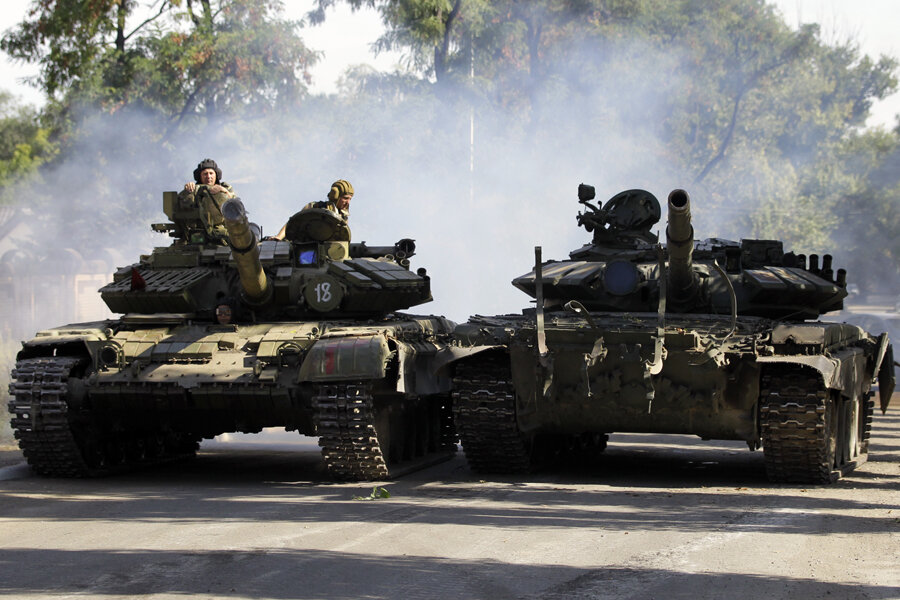Heavy fighting in eastern Ukraine leaves six dead despite cease-fire
Loading...
Heavy fighting broke out in eastern Ukraine on Sunday between pro-Russian rebels and Ukrainian government forces, leaving at least six dead.
The fighting, which shattered a 10-day-old cease-fire, erupted around the airport in the rebel-dominated eastern city of Donetsk. A rebel fighter told the New York Times, “It’s not a cease-fire. It’s full-on fighting.” Sunday’s fighting marked an escalation over the past several days.
The two sides have shelled each other almost daily since the cease-fire agreement was signed Sept. 5, each blaming the other for violations, but generally the intense, large-scale battles of recent months have ceased. Sunday’s action was, however, a marked escalation, suggesting that one side or the other was on the attack.
The Ukrainian government says the cease-fire agreement signed in Minsk has been broken 249 times.
An international monitoring team from the Organization for Security and Cooperation in Europe (OSCE), whose role was agreed upon by all parties, came under shelling during Sunday’s fighting. “All six colleagues were able to get back to base but both vehicles were badly damaged. We regard this as a very serious incident. It's the first time our vehicles have taken fire,” OSCE spokesman Michael Bociurkiw told Reuters.
Today in western Ukraine, military exercises named Rapid Trident are due to begin with the participation of 15 countries including 200 US soldiers. According to news reports, the exercises will not involve the firing of live weapons.
Ukraine’s defense minister said NATO countries have started deliveries of weapons to the Ukrainian army. Several NATO countries have denied any involvement. The defense minister said:
"I have no right to disclose any specific country we reached that agreement with. But the fact is that those weapons are already on the way to us - that's absolutely true, I can officially tell you.”
On Saturday, Ukraine’s prime minister Arseniy Yatsenyuk accused Russian president Vladimir Putin of continued meddling and of providing arms to the eastern rebels.
“I clearly understand the final goal of Putin. He doesn’t want to take just Donetsk and Luhansk. He is trying to take all of Ukraine. He wants to re-form the Soviet Union.”
Russia denies aiding rebels in eastern Ukraine; NATO and Kiev both say over 1,000 Russian troops are currently on Ukrainian territory. Agence France-Presse reports that two of the rebel leaders who signed the cease-fire agreement in Minsk are now claiming they were merely observers, a distancing that undermines the deal.
Over 3,000 people have been killed over five months of fighting in eastern Ukraine with hundreds of thousands of people fleeing the region, according to the United Nations.
US Secretary of State John Kerry is scheduled to meet Russian Foreign Minister Sergei Lavrov in Paris today on the sidelines of a French-run summit on combatting the Islamic State. Ukraine’s President Petro Poroshenko heads to Washington later this week where he will hold talks with President Barack Obama.






